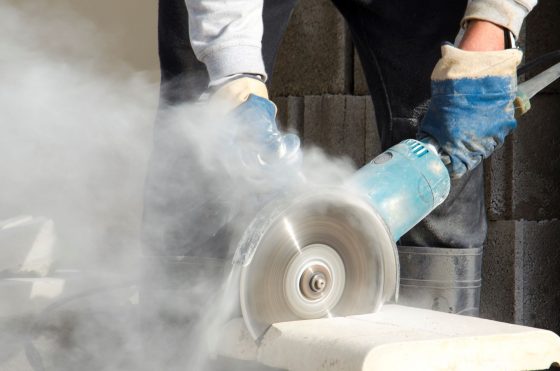BCCSA’s online tool can help employers conduct a risk assessment and apply effective controls and safe work practices where silica dust may be a hazard.

Photo credit: istock.com/Mogala
As an employer in B.C., you are required to protect workers from hazardous exposures — including from silica. Silica is a mineral found in sand, as well as in quartz and other types of rock. It’s one of the most common hazards on worksites in construction, oil and gas, manufacturing, and agriculture.
Workers who inhale respirable crystalline silica (silica dust) can develop silicosis and other respiratory diseases that take years to appear. WorkSafeBC’s webpage on silica lists many activities that create silica dust, including:
- Chipping, grinding, or drilling
- Crushing, hauling, or dumping
- Building demolition
- Power cutting or dressing stone
- Abrasive or hydro blasting
A tool for assessing silica exposure risk
In 2017, the BC Construction Safety Alliance (BCCSA) released their online Silica Control Tool™. You can access the tool with a smart phone, tablet, or computer.
When you enter details about a task, the tool shows the silica exposure level and the safety controls required. You can also generate and save a customized exposure control plan, which B.C.’s OHS Regulation requires you to have. (See more from WorkSafeBC about Developing a Silica Exposure Control Plan.)
The tool relies on scientific studies and data collected by a research team from UBC’s School of Population and Public Health in the Faculty of Medicine.
Growing the database of activities
I contacted Ammar Kavazovic, BCCSA’s director of programs and initiatives, to find out how the tool was being received. Ammar said that since its release, the number of users has grown steadily. To date more than 7,000 exposure control plans have been completed.
Since launch, BCCSA has added more exposure measurements to the database and is eager to keep adding more activities. For example, in 2020 they added grinding and polishing artificial stone and/or granite countertops, and breaking up concrete using an excavator fitted with a jackhammer attachment.
If you enter a task in the tool and don’t get results, ask BCCSA for help. Ammar says, “We’ll come out to your site, and we’ll sample the dust produced by that particular activity, for free. We’ll submit it to a lab to have it analyzed, and then we’ll provide you with that analyzed data, which you can then use to create an exposure control plan.” The new data will also be added to the tool so others can refer to it.
In fall 2021 the tool was introduced in Ontario, providing access to 70 workplaces to begin testing it in a one-year pilot project. The project is led by the Occupational Health Clinics for Ontario Workers and the Canadian Centre for Occupational Health and Safety. BCCSA is hoping that the tool will eventually be adopted nationally, so it can improve worker safety across Canada.
Thanks to Ammar for telling me about this important project that so many are contributing to.


